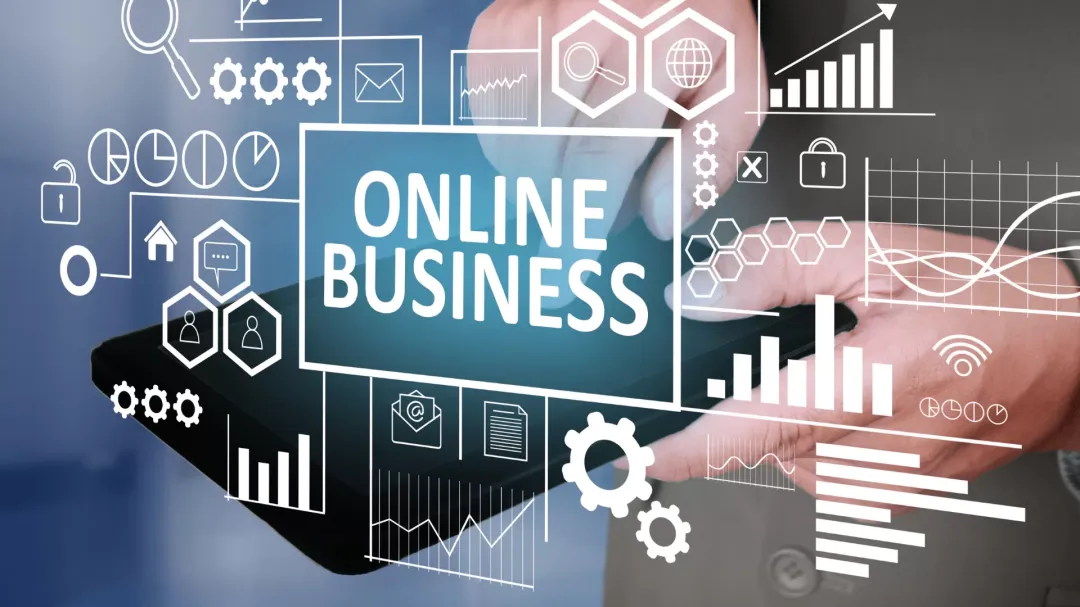Internet marketing is no longer a niche strategy—it’s essential. Whether you run a small business, manage a startup, or lead a well-established company, the internet has transformed how businesses connect with their audiences and drive sales.
But, as opportunities grow, so does competition. With countless companies vying for the same digital attention, a robust internet marketing strategy is the key to standing out and building a loyal customer base.
This blog will walk you through the fundamentals of internet marketing, its major branches, and actionable techniques to refine your online presence. From leveraging the power of SEO to building compelling social media campaigns, this guide has everything you need to get started.
What Is Internet Marketing?
Internet marketing—sometimes called online or digital marketing—uses the web to promote products or services. This encompasses everything from content creation and social media campaigns to paid ads and search engine optimization (SEO).
At its core, internet marketing is all about reaching your ideal audience wherever they are online. It’s measurable, scalable, and incredibly cost-effective—making it one of the most powerful tools for businesses.
Why Is Internet Marketing Important?
The internet reaches over 5 billion people globally. With such a vast audience, the potential for growth through online marketing is staggering.
Here’s why modern businesses can’t ignore it:
- Wider Reach – You can attract customers worldwide—no constraints, no borders.
- Cost Efficiency – Unlike traditional marketing, going digital often has a much better return on investment (ROI).
- Measurable Results – Analytics tools allow you to track performance and adjust your efforts in real time.
- Personalized Marketing – Deliver highly targeted ads tailored to specific demographics for maximum engagement.
Key Components of Internet Marketing
To create an internet marketing plan that generates results, you need to understand its main components. Each one plays a distinct role in crafting a cohesive and impactful online presence.
1. Search Engine Optimization (SEO)
SEO is the process of optimizing your website so that it ranks higher in search engine results pages (SERPs). The higher your ranking, the more traffic—and typically sales—you’ll generate.
Actionable SEO Tips:
- Keyword Research – Use tools like Google Keyword Planner or Ahrefs to find relevant keywords for your niche.
- Content Optimization – Incorporate keywords naturally into your titles, headers, and meta descriptions.
- Technical SEO – Ensure mobile-friendliness, improve page load speed, and fix broken links.
- Backlinks – Build strong backlinks from reputable websites to improve authority.
2. Content Marketing
Content marketing focuses on delivering valuable, informative, or entertaining content to your target audience. Great content builds trust and drives organic traffic.
Examples of Content Marketing:
- Blog posts
- Videos
- Infographics
- Case studies
- Email newsletters
Consistency is critical—create a content calendar to maintain a steady flow of relevant material.
3. Social Media Marketing
Roughly 60% of the global population is on social media. Platforms like Instagram, Facebook, TikTok, LinkedIn, and Twitter (X) offer unparalleled opportunities to connect directly with your customer base.
How to Succeed on Social Media:
- Choose Your Platforms – Focus on platforms your audience uses most.
- Post Regularly – Keep your brand active, from updates to promotions.
- Engage – Interact with comments, direct messages, and mentions.
- Experiment with Formats – Try stories, videos, reels, and posts to see what resonates best.
4. Email Marketing
Don’t underestimate the power of email—it’s still one of the top-performing internet marketing strategies. By reaching customers directly in their inbox, you can build lasting relationships.
Key Tips for Effective Email Campaigns:
- Personalization – Use recipient names and customized content based on their preferences.
- Segmentation – Group your email list by demographics or buyer behavior for targeted messaging.
- Call to Action (CTA) – Encourage readers to act, such as shopping now or reading a blog.
5. Paid Advertising
Platforms like Google Ads, Facebook Ads, and LinkedIn Ads allow businesses to promote their products or services to a defined group of people. Compared to organic strategies, paid advertising quickly boosts visibility and drives immediate results.
Types of Paid Advertising:
- Pay-Per-Click (PPC) – You’re charged only when someone clicks your ad.
- Display Ads – Visual graphics showcasing your offerings.
- Social Media Ads – Sponsored content promoting your brand on relevant platforms.
Use analytics to monitor ad performance closely and adjust your campaigns for the best ROI.
6. Analytics and Performance Tracking
You can’t improve what you don’t measure. Analytics tools like Google Analytics, HubSpot, and SEMrush give you a deep understanding of what’s working and what’s not in your campaigns.
What to Track:
- User Behavior – Check how visitors interact with your site.
- Conversion Rates – Understand how many leads turn into paying customers.
- Click-Through Rates (CTR) – Evaluate the effectiveness of your CTAs or ads.
- Engagement Metrics – Measure likes, shares, and comments across social platforms.
Practical Steps to Build Your Internet Marketing Strategy
Here’s how to craft a powerful internet marketing strategy for your business step-by-step:
- Set Clear Goals – Define what you want to accomplish (e.g., brand awareness, leads, or sales).
- Understand Your Audience – Create buyer personas with details about your audience’s demographics, behaviors, and needs.
- Choose Your Strategies – Select the internet marketing components most aligned with your goals.
- Create Quality Content – Publish content that is engaging, valuable, and relevant to your audience.
- Allocate a Budget – Include costs for paid campaigns, tools, and resources.
- Monitor Performance – Use data-driven insights to refine your strategies.
How to Stay Ahead in Internet Marketing
The online landscape evolves rapidly, and staying ahead requires adaptability. Here are a few tips to future-proof your strategy:
- Stay Updated – Follow industry blogs and attend webinars to keep up with trends.
- Experiment – Conduct A/B tests to see what generates better results.
- Embrace New Technology – Consider tools like AI-driven marketing platforms or automation to stay competitive.
Unlock the Potential of Internet Marketing
The world of internet marketing offers endless opportunities. From SEO to paid ads, these techniques can help you elevate your business and connect with a global audience. But success takes time, strategic planning, and constant optimization.
Now is the perfect time to take your marketing efforts online—don’t wait to make your mark in the digital world.
Common Challenges in Internet Marketing and How to Overcome Them
While internet marketing offers immense potential, it also comes with its fair share of challenges. Recognizing these obstacles early can help you build robust solutions and ensure your strategies remain effective.
Challenge 1: Driving Consistent Traffic
Many businesses struggle to maintain a steady flow of visitors to their website. Traffic can fluctuate due to seasonality, competition, or inconsistently implemented strategies.
How to Overcome It:
- Focus on long-term SEO practices to drive organic traffic consistently.
- Maintain an active presence on social media by posting regularly and engaging with your audience.
- Use email marketing to re-engage current subscribers and drive repeat traffic to your site.
Challenge 2: Generating and Converting Leads
A consistent challenge for marketers is turning website visitors into qualified leads and converting those leads into paying customers.
How to Overcome It:
- Create strong lead magnets like eBooks, free trials, or webinars to capture interest.
- Set up landing pages optimized for conversions with clear CTAs and minimal distractions.
- Use retargeting ads to re-engage users who visited your site but didn’t complete an action.
Challenge 3: Keeping Up with Emerging Trends
The digital marketing space changes rapidly, with new platforms, algorithms, and tactics regularly emerging. Businesses must adapt quickly or risk falling behind competitors.
How to Overcome It:
- Dedicate time to ongoing education through webinars, courses, and industry news.
- Experiment with new tools, such as AI-driven technologies or new social media video formats.
- Solicit feedback from your audience to ensure your strategies remain relevant and impactful.
Challenge 4: Measuring Return on Investment (ROI)
Tracking the success of campaigns and proving ROI can be difficult, particularly when dealing with multichannel marketing efforts.
How to Overcome It:
- Use integrated tools like Google Analytics or HubSpot for centralized data tracking.
- Develop clear KPIs for each strategy and ensure consistent reporting.
- Regularly assess and adjust campaigns based on performance metrics to maximize results.
By identifying and addressing these challenges, businesses can create internet marketing strategies equipped to withstand obstacles while driving growth effectively.
Challenge 5: Allocating Resources Effectively
For many businesses, particularly small and medium-sized enterprises, limited budgets and resources can hinder the execution of a robust internet marketing strategy. This challenge often leads to prioritizing short-term goals over sustainable long-term growth.
How to Overcome It:
- Prioritize High-Impact Strategies – Focus on marketing efforts that generate the most ROI, such as targeted email campaigns or SEO for organic traffic.
- Automate Repetitive Tasks – Use marketing automation tools to save time and resources for tasks like scheduling social media posts or sending follow-up emails.
- Outsource When Needed – Partner with freelancers or agencies for specialized tasks such as content creation or PPC campaign management, which can often be more cost-effective.
- Leverage Free Tools – Use free or freemium marketing tools to get started, such as Canva for design or Ubersuggest for basic keyword research.
Challenge 6: Building Customer Trust
The abundance of options online makes consumers more cautious when choosing where to spend their time and money. Establishing credibility and fostering trust between your brand and your audience is critical for long-term success.
How to Overcome It:
- Showcase Social Proof – Highlight reviews, testimonials, and case studies to demonstrate your value to prospective customers.
- Be Transparent – Clearly communicate your pricing, terms, and processes to avoid confusion or mistrust.
- Maintain Consistency – Ensure your messaging, branding, and tone remain consistent across all platforms and interactions.
- Engage Your Audience – Actively respond to questions or concerns on social media, emails, or forums to show customers you value their input.
The Future of Internet Marketing
The internet marketing landscape is dynamic, and staying ahead requires a proactive approach. The future will likely integrate even more personalized marketing, artificial intelligence, and immersive experiences with technologies like AR and VR. Businesses that position themselves as innovators and readily adapt to these developments will maintain an edge over the competition.
To ensure success in tomorrow’s market, businesses should continuously evaluate their strategies and remain open to experimenting with new tools and techniques. Similarly, focusing on consumer needs and preferences will always remain a vital component of any successful marketing strategy.
By staying informed, agile, and customer-centric, your business can thrive in the evolving world of internet marketing and secure a lasting presence in the digital space.









